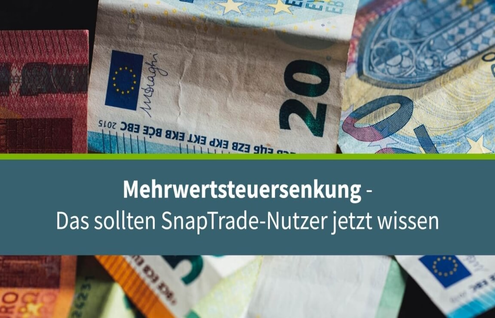Competitive pressure on the marketplaces: How dealers still sell profitably

E-commerce is easier than ever. Apart from the necessary legal protection, the barriers to entry are low. Marketplaces such as Amazon, eBay & Co. have an immense reach, with which private individuals can also achieve success with their own online business. The flip side of the coin, however, is that it is precisely this simplicity that is attracting more and more competitors to the marketplace. The competitive pressure between dealers is growing. In this article we will tell you how you can still sell profitably.
The competitive pressure on marketplaces is great – and it will continue to grow
On Amazon, eBay and the like, retailers face stiff competition. In the future, competitive pressure will increase rather than decrease, because online trade has experienced strong growth, not least due to the corona pandemic. The German Retail Association has identified an increase of over 11 percent for this in 2020. Because online shopping is convenient for consumers, industry experts assume that they will not return to old habits even after the pandemic is over. The growth in e-commerce should therefore be sustainable because more and more retailers are reacting to this circumstance and will take the path to online trading.
5 ways traders can deal with the increasing pressure on marketplaces
Here are 5 ways you can cope with the increasing pressure on marketplaces and continue to run a profitable business.
#1 Internationalize your sales
Marketplaces bring international markets together. On Amazon, for example, in addition to .de, it would be possible to generate new sales potential within Europe on .uk, .fr or .it. In this way you can better exploit the reach of the marketplace and thus reduce your dependency on your national sales. If sales there threaten to fall due to increasing competitive pressure, you can compensate for this deficit by selling in other countries.
Reading tip: Some preparations are necessary for the internationalization of your business. You can find out what these are in this blog post .
#2 Analyze the competition
Of course, the growing pressure on marketplaces is primarily a nuisance, but there is also a lot to learn from the competition. The only important thing is that you keep an eye on them and, ideally regularly, analyze them fundamentally. It can help to clarify the following questions:
- How is the target group addressed?
- What value propositions are there?
- Are there benefits for customers in the form of discounts, vouchers or the like?
- Which payment and delivery modalities are available?
- How are USPs highlighted by the competitor?
Valuable insights can be gained from these and other questions, which can possibly also be adapted to your own business in order to make it even more attractive for your customers.
#3 Invest in Amazon SEO
The word SEO makes the hairs on the back of many retailers stand up: A lot of time and/or money for a job whose success, if at all, often only becomes apparent much later. However, there are simple basic rules from search engine optimization that can also be applied to marketplaces like Amazon and that will help you stand out from the crowd of competitors. This is where the term Amazon SEO came from in the first place, because strictly speaking, the search function of the marketplace is a search engine for products. The simplest and at the same time most important rule here is: what the customer likes, Amazon also likes. Many courses of action can be derived from this:
- Avoid spelling and grammatical errors
- Structure your product texts clearly and assign a clear heading hierarchy
- Use attractive and meaningful images for the product description
- Share valuable information with your customers that reflects the benefits of the product
- Write credible texts and do without superlatives
- Provide a way to contact you if you have any questions
Reading tip: You want to know how you can win the Amazon BuyBox? Then we recommend this post .
#4 Lower your returns rate
While the other tips from our list actively help you to master the competitive pressure on marketplaces, this is more of an indirect help. In addition, a reduction in the return rate is related to some of the measures listed here. But the fact of the matter is that if you manage to reduce your shop’s returns, you avoid costs and create more profit potential. This, in turn, can be of use to you in the face of increasing competitive pressure. In order to lower the return rate, it helps above all to reduce erroneous purchases. To do this, you should focus your attention primarily on the measures from the third step, because the more valuable information you share with your customers, the less often there are returns. You should also make sure that fast and smooth payment and delivery are guaranteed.
#5 Adjust your prices
One of the most effective levers in dealing with the competition can be found in the price. Because, of course, a competitive offer price is a decisive criterion for most customers as to whether the respective provider is even considered for a purchase. However, the challenge in pricing is to stand out from the competition while maintaining a lucrative margin. This balancing act can only be achieved with difficulty with a manual price adjustment. This is especially true if you have a lot of products on marketplaces.
Use SnapTrade for automated price adjustment
Product prices on marketplaces sometimes change several times a day. A manual price adjustment is then not expedient, since it would be very time-consuming and you would always lag behind the price development of your competitors. SnapTrade offers an automated price optimization solution. With the help of various strategies , the prices of your products can be adjusted based on different criteria. For example, the BuyBox Max strategy always finds the ideal price for winning the BuyBox.










